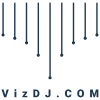COURSE MATERIALS
The course materials consist of this printed manual, the associated printed exercises document and the files – normally provided on a USB flash drive, or provided to you by your training organiser. They are yours to use both during the training course and also as a reference after the course to help you in your use of Tableau in you own work. There is an appendix at the end of this manual that includes useful reference information.
Doing the ExercisesEach exercise has a both business and functional objective and indicates what the output will be together with step by step instructions required to complete the exercise. The trainer will carry out a ‘follow me’ approach for some exercises to help get you started. As you progress through the course the instructions become less detailed and will require you to determine how to perform common actions.We encourage a collaborative learning and development approach and suggest that you engage with both your fellow delegates and the instructor when you need support and guidance.
The files providedYou are provided with 3 folders in the root of the USB:
- Data, contains the exercise datasources
- Resources, contains links to useful websites and exampledashboards
- Workbooks, contains a Starters folder where packaged workbooks (.twbx) are located and used for thestarting point of most of the exercises. There is also a Solutions folder that contains the completed exercises for you to review after the course.
If you are using a MacThis manual is written for windows machines. The most common keyboard Mac equivalent strokes are:
| Windows | Mac |
| CTRL | Command ⌘ |
| CTRL + click | Hold Command ⌘ key while clicking |
| Right click (to access the Context menu) | Hold Command ⌘ key while clicking |
| Right click + drag | Hold Option ⌥ key while click and dragging |
| Press CTRL + Left Arrow | Press Command ⌘ + Control ∧ + Left Arrow  |
In addition, the usual Mac differences for manipulating files and windows also apply.On opening multiple workbooks in Tableau Desktop on a Mac, each workbook has its own instance of Tableau which is different to the normal Mac behaviour of one instance managing all open files.


